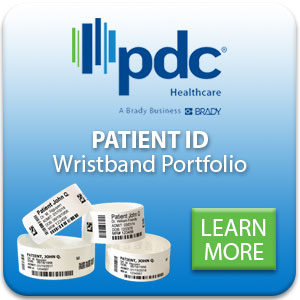Re-posted with permission from PDC Healthcare and edited.
Public arenas everywhere have cracked down on security, so why is healthcare so far behind this prominent trend? As a public institution, hospitals usher in dozens or hundreds of visitors every day, which include people from every walk of life who may be in distress as they cope with a loved one’s medical emergency.
According to the International Association for Healthcare Security and Safety (IAHSS) Foundation’s 2017 Healthcare Crime Survey, the overall violent crime rate in US hospitals has increased in 2016, compared to the previous year. Results showed additionally, that workplace violence, which accounts for visitor-on-staff, or patient-on-staff, made up 85% of all aggravated assaults, and 91% of all assaults. So why aren’t nurses required to have the same public security training as flight attendants when crime in healthcare has risen so dramatically in recent years?
In May of 2014, a woman in Pittsburgh was sentenced to prison for abducting a 3-day-old infant from a hospital by carrying the baby out in a handbag, according to the Associated Press. Furthermore, in August of 2016, an armed shooter killed a patient and healthcare aide at a Florida hospital. Other contributors to violent crimes in the healthcare sector include gang disputes that spill over into hospitals, and cutbacks in state corrections budgets that result in channeling forensic patients to local hospitals.
In addition to violence, theft is also a major concern for most healthcare facilities. With substance abuse on the rise, hospital pharmacies are targets for narcotic addicts. Expensive medical equipment and patient identity data is also at risk for theft when unidentified visitors are roaming your facility and your security is lacking.
According to Health Facilities Management’s 2016 Hospital Security Survey, 75% of hospitals found it more challenging to maintain security in their facilities over the past two years, in part due to an increase in behavior health issues and Opioid abuse. In many facilities, there is not a hospital visitor management system in place. Establishing one is a crucial security measure to protect and provide peace of mind to patients, staff and other patrons. Without one, your facility faces a much higher risk for violence and theft to occur. Because of this, hospitals are required to identify visitors in order to meet regulatory compliances by the Joint Commission, OSHA, and HIPAA.
If you are concerned that your visitor management system may not be up to par, here are six easy steps to help your facility adopt best practices to enhance security and maintain regulatory compliance.
STEP 1: DO SOMETHING…ANYTHING!
Does your facility have a security policy in place for visitors? If not, better get started. The Joint Commission’s accreditation requires “the hospital to have a written plan for managing the following: security of everyone who enters the hospital’s facilities,” (EC.01.01.0). Conduct a comprehensive risk assessment and develop an effective hospital security program to mitigate risks, threats, and vulnerabilities. Risks must be monitored, reviewed, and addressed on a continuous basis. Choose appropriate security measures to implement to reduce the identified risks. Your security policy should also specifically address how visitors will be identified and managed.
STEP 2: STOP ACTING LIKE A TEENAGER AND LISTEN TO YOUR PARENTS
The Joint Commission issued a Sentinel Event Alert #45 for “preventing violence in the healthcare setting,” which emphasized that in light of steadily increasing crime rates, a secure hospital campus is vital to the safety of your patients, staff and visitors. HIPAA’s Facility Access Policy requires visitors to wear ID badges for the specific department they are visiting, while unidentified individuals will be immediately escorted out of restricted areas. The Joint Commission’s accreditation also requires hospitals to “manage safety and security risks,” (EC.02.01.01). An estimated 17% of hospitals received visitor-related citations in 2009, according to the Joint Commission.
STEP 3: SEND YOUR STAFF TO BOOT CAMP
Lack of proper staff training in hospital visitor management puts your security plan at risk, so it’s critical to make training a priority. Set up informative sessions for new employees and mandate annual refresher courses for your entire hospital staff. Conduct periodic assessments. Mention important statistics like:
- Healthcare is more susceptible than all other industries for workplace violence. Nearly 75% of all workplace assaults between 2011 and 2013 occurred in the healthcare industry
- Between 2000 and 2011, 154 shootings resulted in an injury on the grounds of a US hospital
- 98% of healthcare facilities experience violence and criminal incidents
- Healthcare and social workers are 5 times more likely to be victims of a non-fatal assault or violent act than in any other occupation
- More than 60% of workplace non-fatal assaults occur in healthcare
- Assault rate has increased from 8.1 per 100 beds in 2015 to 9.3 in 2016
Come back next week to read the rest of this article…
In the Meantime, Talk to Us
Speak with an ISG expert in detail about your specific facility safety and security concerns with a hospital visitor management solution. With more than 90 offices across the US and Canada, we can help you improve your healthcare campus security while increasing the efficiency of your registration and verification processes. We can also help you cut costs by reducing patient identification errors and improving your customer experience.
Talk with us today to discover how the ISG can help your healthcare organization.
Original article written by Heather Hudson for Connect ID


